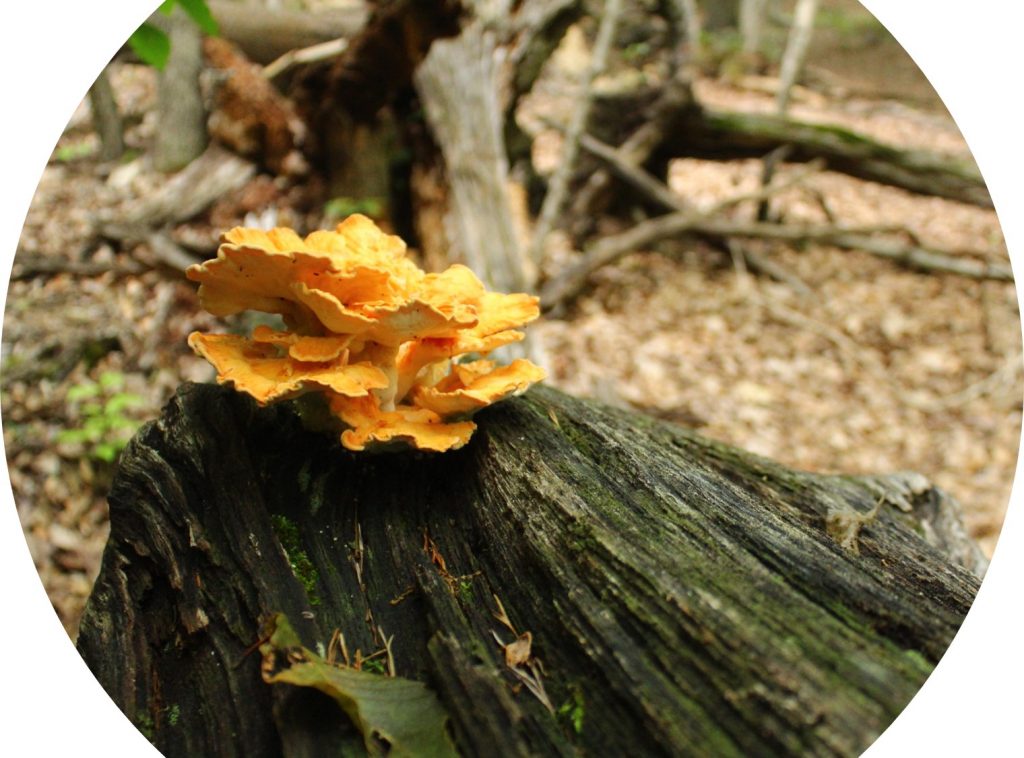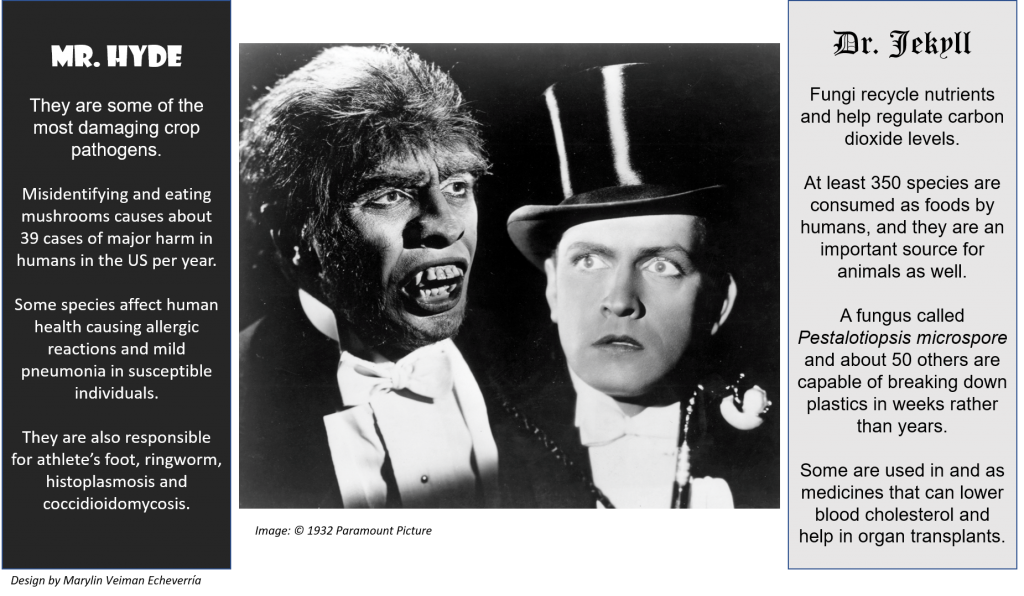It’s fungi season! And as I hiked around this August, I was observing them everywhere at the Bull Run Mountains Nature Preserve. So, I wanted to share with you a few facts about these fascinating organisms that are actually closer to animals than plants. With fun names like “chicken of the woods” (Laetiporus), a great variation of colors and appearance and tons of fun facts, fungi can be very interesting to study.
Fungi are living organisms that include rusts, smuts, mildews, yeast, molds, and mushrooms.

· Yeast, the same one you use to make bread
· Molds like the ones that grow on your forgotten bread
· Mushrooms, that you could use with that bread in a sandwich
A scientist that studies fungi is called a mycologist. These scientists learn about the properties of fungi, their uses to human health, and their roles in nature, including their toxicity and dangers. For example; from Kew, Royal Botanic Gardens, in the United Kingdom “Dr. Ester Gaya leads a research project at Kew, exploring the diversity and evolution of the world’s fungi” (Briggs, 2018) and Martin Bidartondo also at Kew, is a specialist in mycorrhizal fungi who spends part of his time researching and another part teaching about fungi, ecology, and conservation (Coehlo, 2009).
Just like the fictional character Dr.Jekyll and Mr.Hyde (1886) by Robert Louis Stevenson, fungi play many important roles in health, food security, and in nature, but they also have an evil alter ego (Briggs, 2018). So, let me get the facts.
